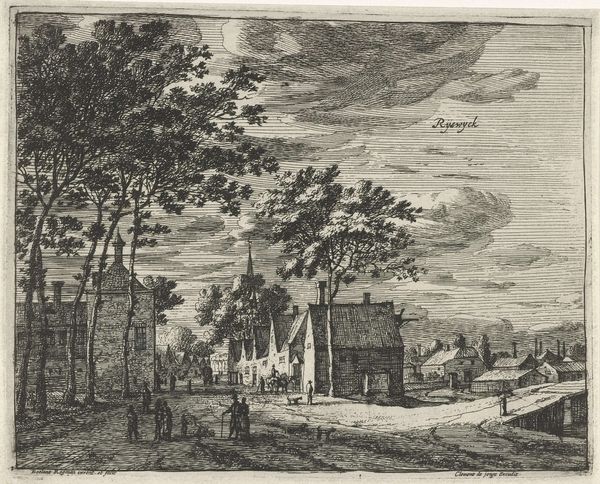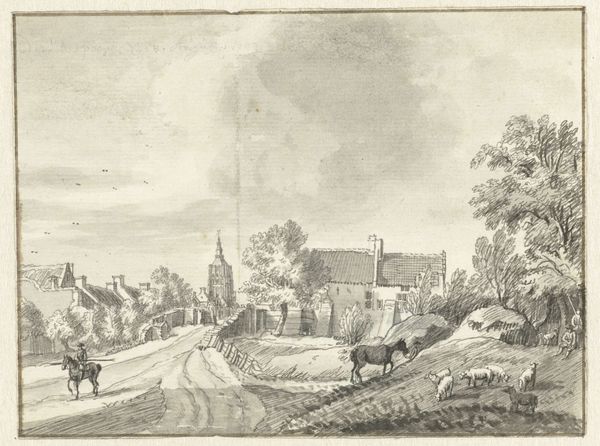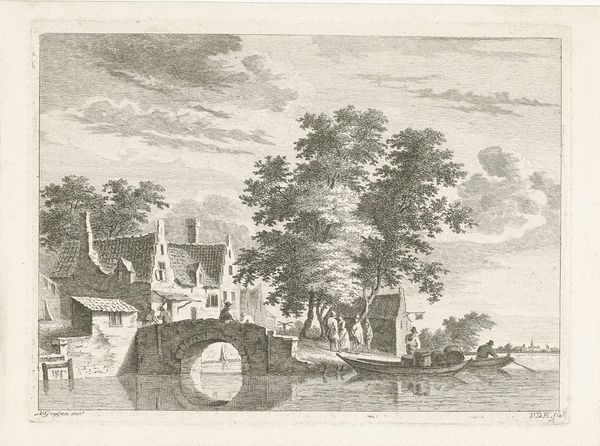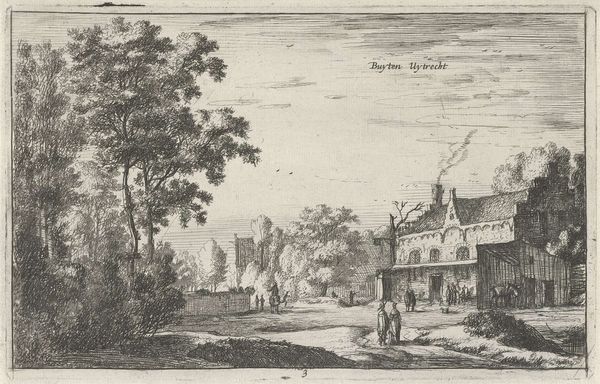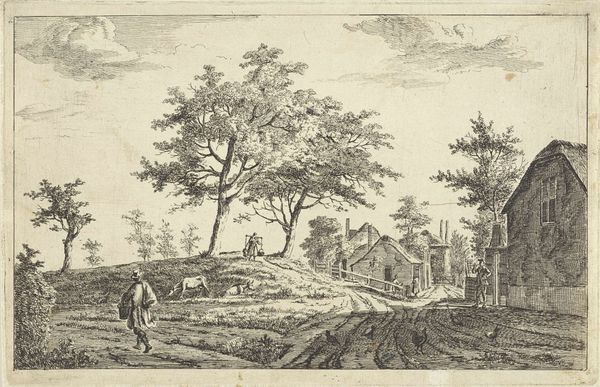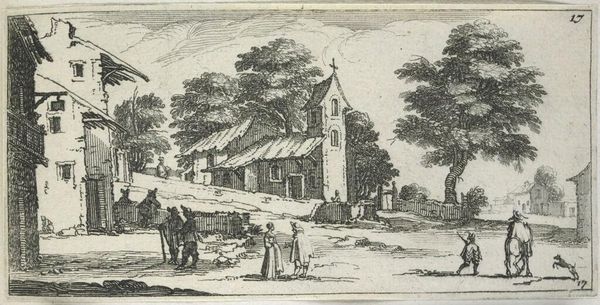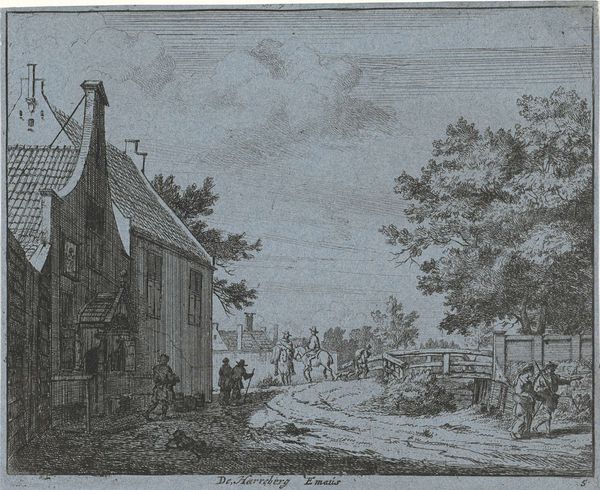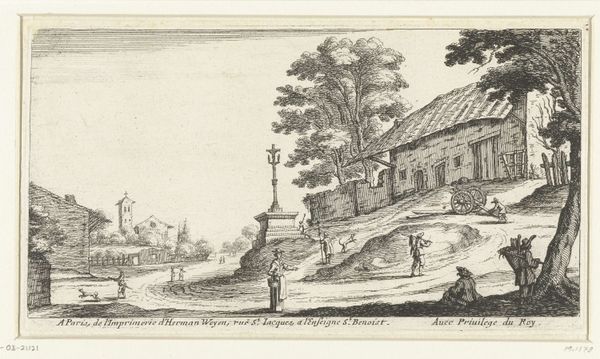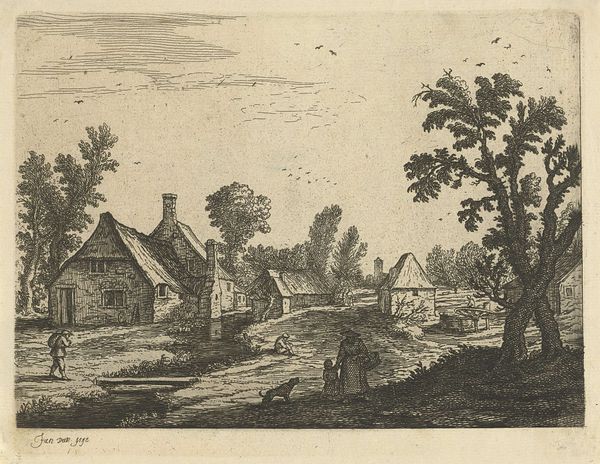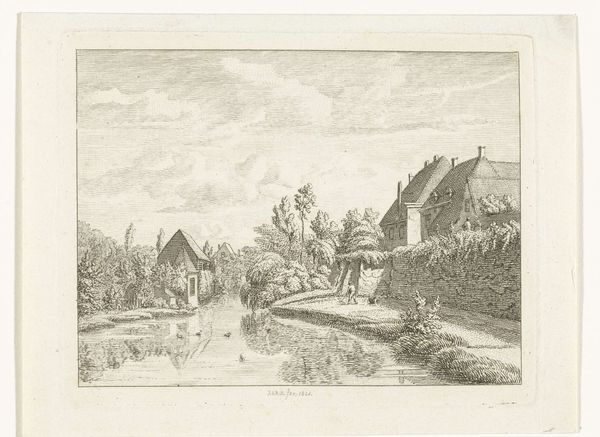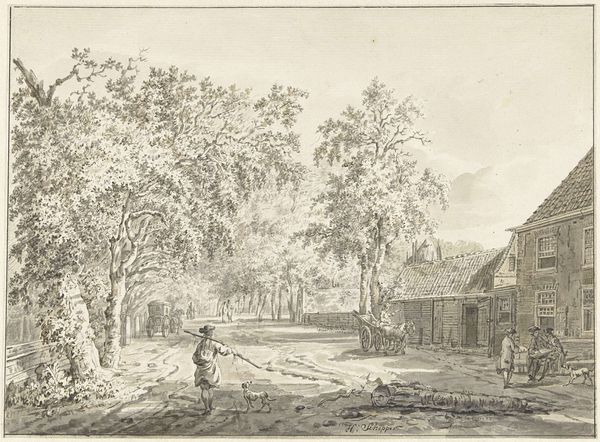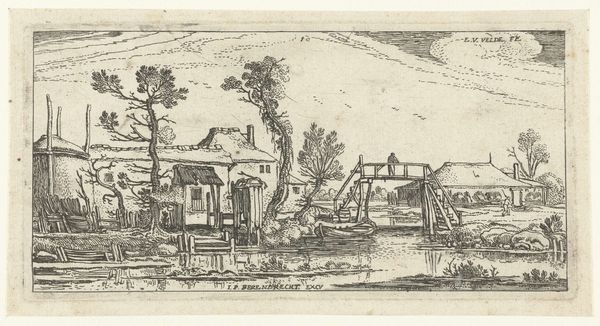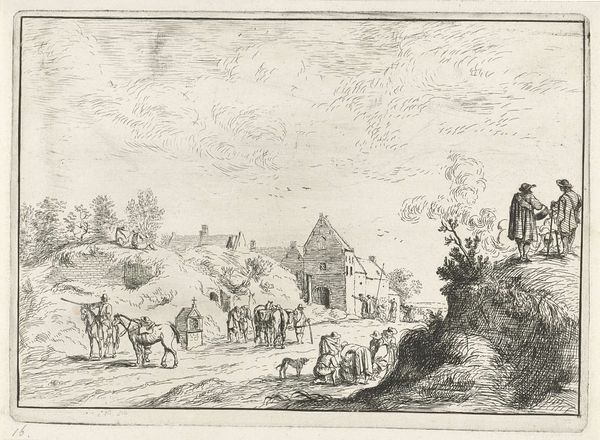
drawing, etching, pen, engraving
#
drawing
#
dutch-golden-age
#
pen illustration
#
pen sketch
#
etching
#
pencil sketch
#
old engraving style
#
landscape
#
pen
#
genre-painting
#
northern-renaissance
#
engraving
Dimensions: height 110 mm, width 205 mm
Copyright: Rijks Museum: Open Domain
Editor: This engraving, "Landschap met een groot huis aan een dorpsweg," or Landscape with a large house on a village road, is attributed to François Collignon, dating somewhere between 1621 and 1672. It’s fascinating to observe the bustling village road that Collignon presents, it evokes a real sense of daily life in that period. What compositional aspects stand out to you in this work? Curator: The work immediately directs our eyes through its sophisticated linear perspective. Note how the road, buildings, and figures are rendered with great detail in the foreground and gradually fade into the distance. The variation in the hatching technique establishes depth. Consider the geometric forms; the imposing house contrasts the simpler structures further down the road. Editor: So, you’re focusing on the visual language itself, how Collignon organized forms and used techniques, not necessarily the historical or cultural meaning? Curator: Precisely. I analyze how elements work together, focusing on the artist's choices within the picture plane and on how the structure generates the viewer’s experience. The balance between the weighty architecture on the left and the lighter, almost whimsical details on the right is superb, no? It generates dynamism. Editor: I hadn't noticed the careful balance. Do you think the placement of the figures in relation to the house suggests a hierarchy of space? Curator: That is one valid possibility, but, from a formalist perspective, figure and building act as integral parts within a wider unified structure. Without figures the image loses narrative complexity; their relative positioning creates a dynamic interplay and establishes relational proportions between elements in the image. Editor: I see your point, the figures create relational awareness within the picture, drawing a sense of how to measure space using human form. I have definitely broadened my awareness by listening to your formalist interpretation. Thanks! Curator: And my perspective has gained appreciation for how open interpretations unlock diverse meanings in works like this.
Comments
No comments
Be the first to comment and join the conversation on the ultimate creative platform.
